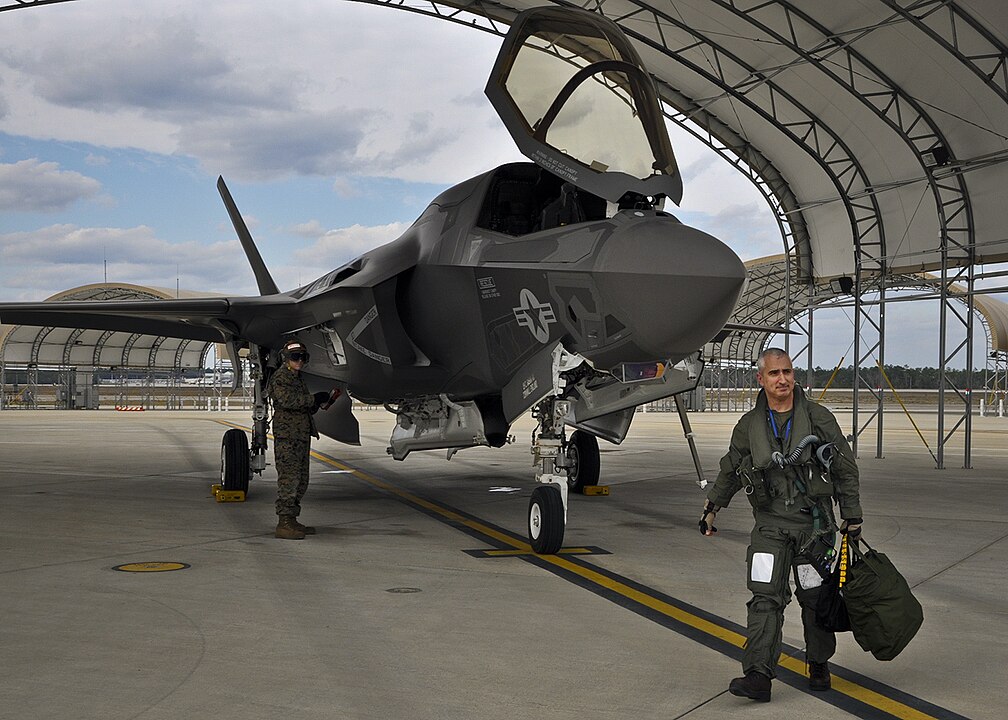
As the Lockheed Martin F-35 Lightning II continues to define the cutting edge of air superiority, the pilot helmet — a crucial component of this fifth-generation fighter — has garnered attention for its unparalleled technological integration and bespoke design.

This helmet, known as the Collins Aerospace F-35 Helmet Mounted Display System (HMDS), equips pilots with a futuristic vision that extends far beyond the cockpit, enhancing their combat capabilities with advanced features that deliver real-time information and situational awareness.

The F-35, which entered active service in 2015, has eschewed a traditional canopy heads-up display (HUD) in favor of projecting crucial flight and mission data onto the helmet’s visor.

This immersive experience gifts pilots a 360-degree view of the battlespace, reminiscent of flying an invisible jet — a capability previously limited to the realm of science fiction.

“The pilot can look down through a portion of their wing and see what’s below,” Tech. Sgt. William Vass of the 419th Fighter Wing detailed to the Air Force.

With embedded cameras on the F-35, images are projected directly onto the helmet display, effectively erasing the boundaries between the pilot and the aircraft.

Crafted through a meticulous two-day process, each HMDS is tailored to the individual pilot’s head shape and interpupillary distance. The result is a helmet so finely adjusted that even a change in hairstyle necessitates refitting.

This customization isn’t merely for comfort; it ensures optimal accuracy of the integrated bi-optical HUD and elevates flight safety.

The helmet’s capabilities are further enhanced by the Distributed Aperture System (DAS), identified as the AN/AAQ-37 by the F-35 Lightning II Joint Program Office.

It incorporates six external sensors that provide missile detection, tracking, and day/night vision — all seamlessly integrated into the HMDS.

Additionally, the HMDS features a groundbreaking night vision system, projecting imagery onto the visor, thereby eliminating the necessity for separate night-vision goggles and streamlining cockpit operations.

Each of these helmets comes with a staggering price tag of $400,000 — more expensive than many high-end automobiles — and reflects the intricate technology and personalized engineering within.

Despite this cost, the U.S. Navy signed a $347.4 million contract for the production of the Gen III HMDS in mid-2023.

While pilots train with mockups, they receive their own helmets only upon assignment to an active F-35 squadron. Each aircraft requires multiple helmets due to wear and the rotation of pilots.

Raytheon has committed to continuous enhancements, including the integration of organic light-emitting diode (OLED) features since 2022. Looking to the future, the HMDS is poised to incorporate emerging technologies, ensuring that the F-35 pilot helmet remains at the vanguard of combat avionics.
Relevant articles:
– Here’s What Makes The F-35 Pilot Helmet So Unique, SlashGear
– 5 Amazing Facts About The F-35 Helmet Worn By Pilots Of The Lightning II, Simple Flying

